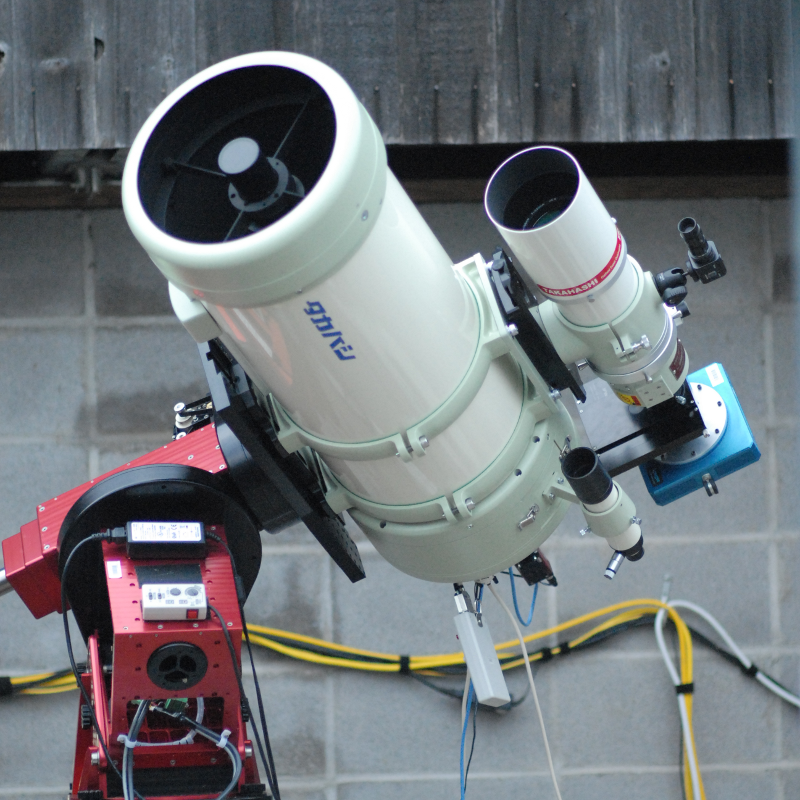Moore Observatory
Wide Field and Planetary Takahashi Telescopes

Mewlon and FSQ telescopes as configured in December 2014.
The widefield FSQ had an Apogee camera and filter wheel for star
clusters, nebulae and comets.
The Mewlon 300 used an
AVT Prosilica video camera for planetary imaging.
Click for an enlarged view.
In typical nightly use, the wide field and planetary telescope and cameras
recorded
images of favorably placed objects in the sky, including constellations,
bright variable stars, nebulae through narrow-band filters,
comets, the Moon, and planets.
An archive of best images
from them and other instruments is maintained on-line.
The Takahashi Mewlon 300 is a 0.3-meter (~12-inch) f/12 Dall-Kirkham and an
Allied Video Technology (AVT) Prosilica high
speed video color camera recorded
images of planets and other bright objects
with sub-arcsecond resolution. Its long focal length yielded diffraction-limited lucky imaging
when seeing permited.
The Takahashi FSQ-106ED apochromatic f/5 telescope and Apogee U9000 CCD camera provided
quantitative science images over a 4° field
of stars at least as faint as 18th magnitude,
in exposure times up to 100 seconds each that could digitally
accumulate for many hours. Filters for photometry, color imaging, and
selecting emission from hydrogen or other gases were available. Through the red hydrogen Hα filter, for example, faint nebulae in
Milky Way stand out even in our light polluted skies, and the FSQ's wide flat field produced many data sets that are in our
archive now. A similar telescope is available for remote use from our facility in Australia.
These telescopes were mounted on a modified Paramount redesigned to be driven by a Galil Motion Controls motor controller and
XmTel software.
This optical system was retired from routine use in 2019 when a
TEC
apochromatic refractor was installed in the Star Dome. The Galil controller became
the prototype for a new electronics system for the Azari telescope.
All of the images, processed data, software, and instructional materials
developed at Shared Skies observatories
are offered free for non-commercial use with Creative Commons or GPL licenses after a short proprietary period.
These and other Shared Skies telescopes are available for use by students at the University of Louisville and the University
of Southern Queensland, and by teachers and students in middle and high schools mentored by faculty at the universities.
To arrange to use the telescopes live, or for robotic observations and access
to archival data, please contact us by email to kielkopf at louisville dot edu.

Last update: December 8, 2019
kielkopf at louisville dot edu

